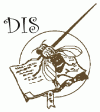



MacIntyre, R. 1999. Phenotypically identical but genotypically unique Drosophila “unknown” stocks for genetics laboratory courses.
Dros. Inf. Serv. 82: 130. View PDF
Erickson, J. 1999. A temperature-sensitive yellow eye color.
Dros. Inf. Serv. 82: 130-131. View PDF
At Cornell, all biological sciences majors are required to take a course in general genetics which includes a mandatory 2 hour laboratory component. As part of the laboratory, each student is required to genetically analyze an unknown strain of D. melanogaster and to write a detailed report on his analysis. This is a six-seven week project and, accordingly, contributes substantially to his grade in the course. Unknowns have generally 3 - 6 mutant genes and are crossed to the following marker stocks: (1) wild type, to identify the genes and their individual phenotypic effects and to localize them to the X or to autosomes; (2) Cy/Pm;Sb/Ubx to place autosomal genes on the 2nd, 3rd, or 4th chromosome; (3) BL L/Cy;Ly Sb or Gl Sb/LVM;f B, to map genes on the 2nd, 3rd, and X chromosomes, respectively. Most students work very hard on this project, and it is not surprising that the “fruit fly experiment” has a widespread, rather notorious reputation. I have always felt, however, that the hard work put in by the students was justified by and, in fact, enhanced the tutorial value of the genetic analysis.
Recently, it came to my attention at a wedding reception in a fraternity house, that there were extensive collections of old Drosophila reports at several places on and around the campus. The inebriated fraternity member bragged to me how valuable these collections were to the genetics “students” seeking short cuts to high grades. Usually by the F1 generation there would be enough information to enable the short-cutter to find an already complete analysis of his unknown in one of these collections. Because of the obvious unfairness of this practice to the serious, hard working student and because of the gamesmanship involved, I decided to construct a set of “unknowns” which would force all students to complete the analysis. After examining several combinations, I found one which involves no difficult phenotypic interactions with the marker stocks. This is a combination of orange eyes, black bodies and incomplete wing veins. In the stocks I’ve constructed so far, orange eyes are due to the interaction of car;st, car;kar, pn;st, pn;kar, v car or pn v. Body color is due to b or e and wing veins to shv or ve. Thus, I have 24 genotypically unique but phenotypically identical or at least very similar stocks (b and e as well as shv and ve show different phenotypes to the trained eye). I plan to multiply this number by incorporating s and rb or ca as additional body color and brown eye mutants.
I’ve found that the yellow eye color trait which I reported previously (DIS 51: 22, 1974) shows an interesting change with temperature.
The trait, wse-y, originated spontaneously in my sepia stock, and I use it in this way, that is, wse-y;se. The eyes are a clear lemon-yellow color at 25°C. At 18°, the eye color of the flies of this stock is indistinguishable from w.
I have found that sepia-yellow works well to show the effect of temperature on phenotype. Students simply make up cultures from stock and incubate them at the two temperatures, or at several temperatures. One may also use the trait, of course, for temperature-shift experiments, so that students may observe what stage of development is sensitive to temperature, in the development of pigment in this case.